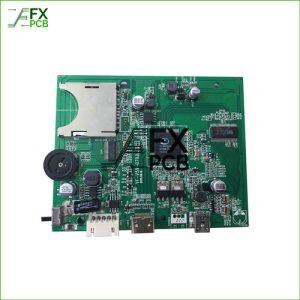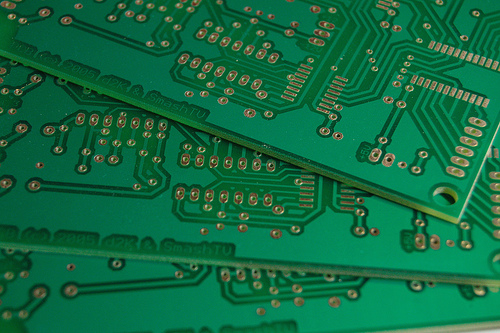
When you select any PCB for any application, we always look at its construction materials, heat resistance, and thermal conductivity. Yes, these factors determine how a PCB will work. Nonetheless, we often forget one important PCB performing factor- the thickness.
The thickness of the printed circuit board also controls its performance and durability. Hence, most manufacturers will follow a standard PCB thickness in their various PCBs. But what is the actual standard for PCB thickness?
Does it vary due to the circuit board application? Or what factors affect the circuit board substrate thickness? And finally, how does it impact the PCB performance?
Let’s find the answer.

Device circuits produce heat while they operate continuously, which can cause overheating and shorts that could harm the device. Air ventilation and heat dissipation are crucial. Printed circuit boards are also affected by this. One big aspect of PCB manufacture and assembly is thermal management. It is the technique of maintaining electrical systems and electronic components’ temperatures within the specified ranges.
FX PCB is specialized in heat sink PCB or PCBA service, and you can ask us any question about your heat sink printed circuit board design, or you can get the price from us in 24 hours.
When we determine the PCB thickness at a standard level, we must realize that the number of layers on a PCB will be the key player in deciding its actual thickness. Since the layers on PCB depend on its application, the PCB thickness will also vary slightly due to its application range.
For instance, some devices will need thicker PCBs, while other devices may require thinner PCB. Thus, the thickness will vary too.
Nonetheless, the industry standard for PCB thickness is 0.063 inches or 1.57mm. This measurement has been a long-term standard for PCB manufacturers ever since printed circuit boards were invented. The reason is quite surprising.
Yes, it was not the industrial needs or device requirements that set the standard thickness for PCB. Instead, it was the plywood sheet thickness that initially determined the PCB thickness. Initially, plywood sheets were used as the substrate of many electronic devices, and these plywood sheets have 0.063 inches of thickness which later become the standard for PCB thickness.
However, more complex devices on the way and invention of better PCB substrates such as epoxy or resin have developed varied thicknesses for printed circuit boards.
Nowadays, the thickness range of PCB differs from 0.008 inches to 0.240 inches. You can choose the exact thickness depending on your applications and device requirements.
Two things directly influence the thickness of PCBs. These factors are-
FR stands for fire retardant, and thus, FR4 PCB is meant for fire retardant PCB substrate. Since these PCBs are easy to manufacturer and inexpensive, it is one of the most used and popular printed circuit boards in the industry.
The standard thickness for FR4 PCB varies from 3″ to 10″. Its thickness varies significantly because manufacturers and device designers ask for different thicknesses of FR4 PCB for different applications. Also, its thickness depends on the number of layers it has.
Multiple layers for PCB have become the new trend for device manufacturers since they can dissipate heat better and have high-performing capacity. So, it is essential that you too understand the standard thickness of two-layer PCBs.
Since it has multiple layers, its standard thickness also varies in different layers. For instance, its top solder mask features 0.01mm thickness and the top layer thickness is usually 0.035mm. The bottom layer and bottom solder mask have a similar thickness. But the core thickness is 1.5mm.
Four layers of PCBs have become popular in the industry lately. The standard thickness of these printed circuit boards is around 0.125”. The bottom and top layersare made using 1-sheet of 1080 and 2-sheet of 2116 copper metal. The core has a 0.093” thickness.
There are two types of main factors that will affect the printed circuit board thickness. These two main factors are-

Since different applications and devices will require the various thickness of the PCB, it is essential to know how to fix its thickness. It would be best if you looked at these facts for this purpose-
The standard PCB thickness was previously 0.063 inches or 1.57mm. But, modern-day PCB has developed different thicknesses for different applications varying from 0.008 inches to 0.240 inches mostly. The layers on the printed circuit board, copper thickness, traces thickness, and the circuit board manufacturing process will control the thickness.
FX PCB has different manufacturing processes for various PCBs, making sure you get the perfect thickness of the PCBs to meet your requirements.

I am Peter Gong. I have been working in PCB and PCBA industry for 15+ years now. I have been a part of the PCB revolution with my dedication to circuit board technologies and creative ideas. I write in FX PCB to impart my knowledge on PCB and PCBA for all circuit board lovers, manufacturers, and users.
WhatsApp us